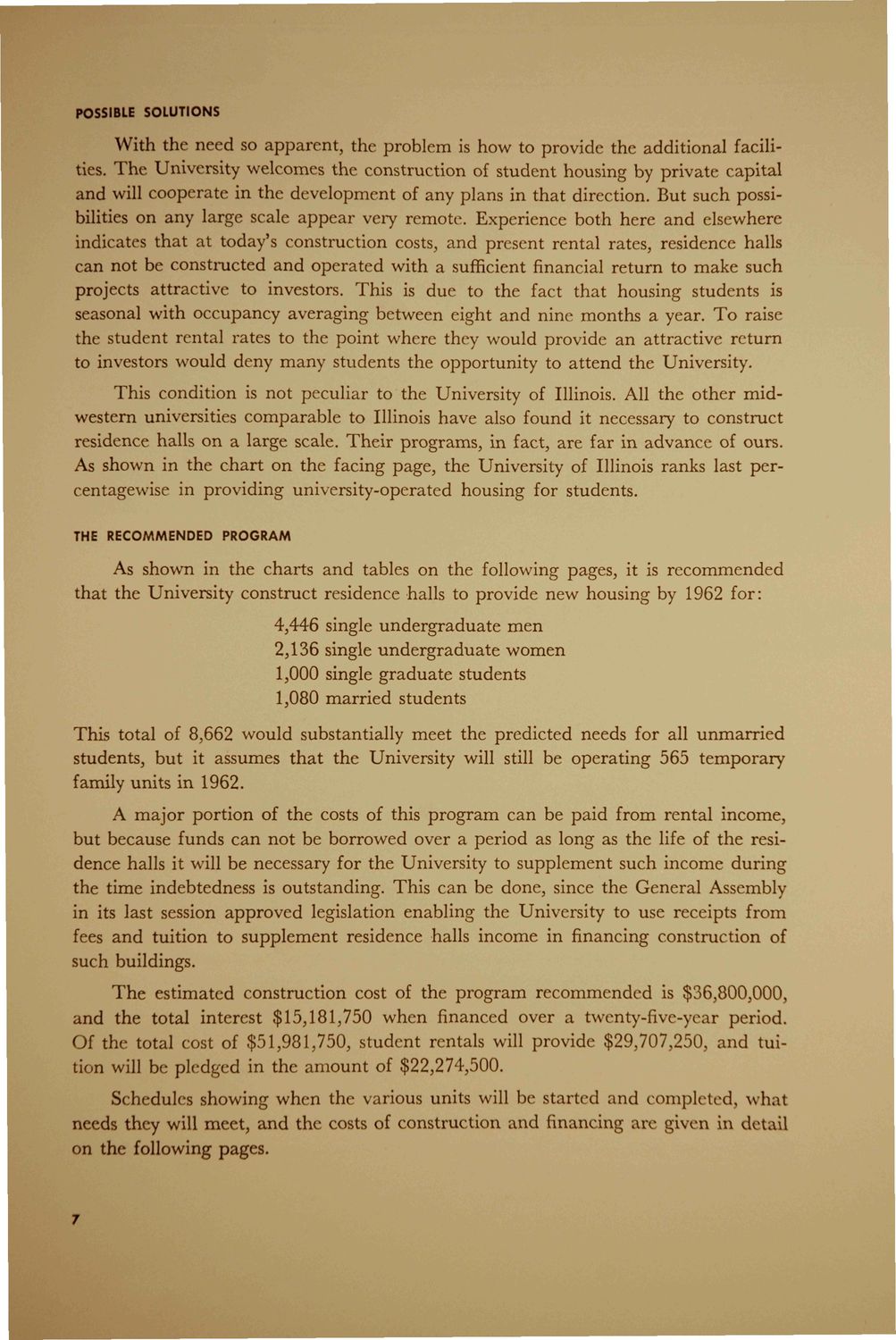| |
| |
Caption: Booklet - Future of Student Housing (1956)
This is a reduced-resolution page image for fast online browsing.

EXTRACTED TEXT FROM PAGE:
POSSIBLE SOLUTIONS With the need so apparent, the problem is how to provide the additional facilities. The University welcomes the construction of student housing by private capital and will cooperate in the development of any plans in that direction. But such possibilities on any large scale appear very remote. Experience both here and elsewhere indicates that at today's construction costs, and present rental rates, residence halls can not be constructed and operated with a sufficient financial return to make such projects attractive to investors. This is due to the fact that housing students is seasonal with occupancy averaging between eight and nine months a year. To raise the student rental rates to the point where they would provide an attractive return to investors would deny many students the opportunity to attend the University. This condition is not peculiar to the University of Illinois. All the other midwestern universities comparable to Illinois have also found it necessary to construct residence halls on a large scale. Their programs, in fact, are far in advance of ours. As shown in the chart on the facing page, the University of Illinois ranks last percentagewise in providing university-operated housing for students. THE RECOMMENDED PROGRAM As shown in the charts and tables on the following pages, it is recommended that the University construct residence halls to provide new housing by 1962 for: 4,446 2,136 1,000 1,080 single undergraduate men single undergraduate women single graduate students married students This total of 8,662 would substantially meet the predicted needs for all unmarried students, but it assumes that the University will still be operating 565 temporary family units in 1962. A major portion of the costs of this program can be paid from rental income, but because funds can not be borrowed over a period as long as the life of the residence halls it will be necessary for the University to supplement such income during the time indebtedness is outstanding. This can be done, since the General Assembly in its last session approved legislation enabling the University to use receipts from fees and tuition to supplement residence halls income in financing construction of such buildings. T h e estimated construction cost of the program recommended is $36,800,000, and the total interest $15,181,750 when financed over a twenty-five-year period. Of the total cost of $51,981,750, student rentals will provide $29,707,250, and tuition will be pledged in the amount of $22,274,500. Schedules showing when the various units will be started and completed, what needs they will meet, and the costs of construction and financing are given in detail on the following pages. 7
| |